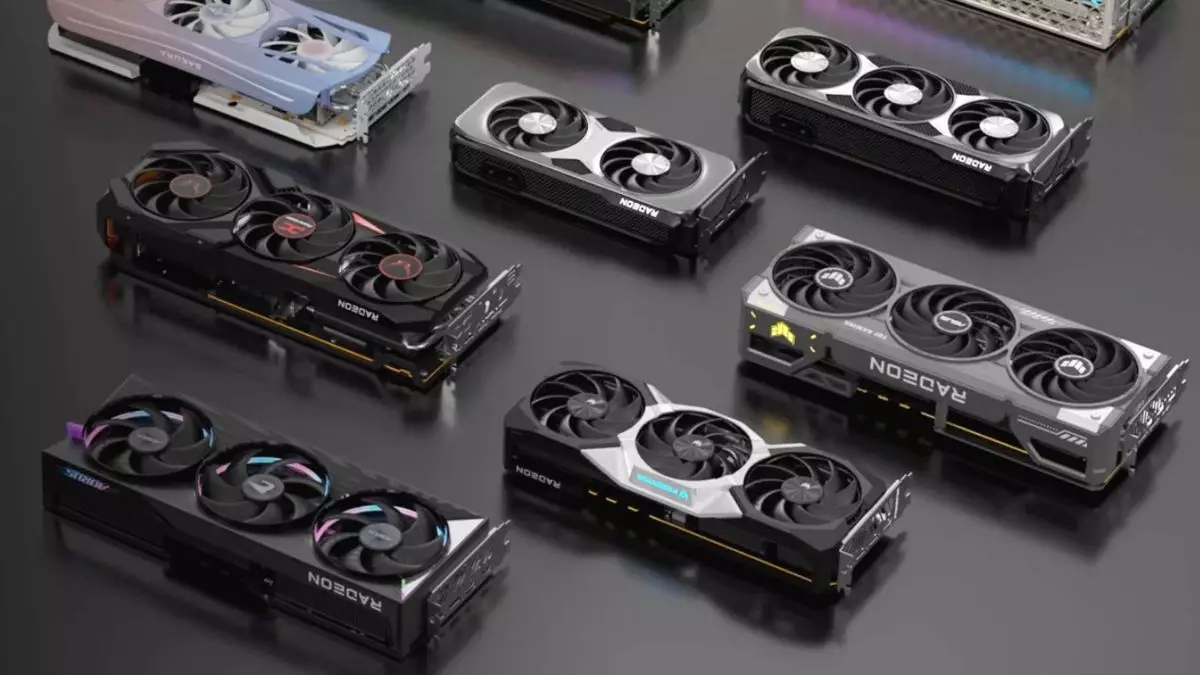The landscape of graphics processing units (GPUs) is often likened to a battlefield, with companies battling for supremacy. As we approach the first quarter of 2025, the excitement surrounding the upcoming AMD Radeon RX 9070 XT shines brightly, even as it contends against the backdrop of supply constraints and pre-launch speculation. The anticipation is palpable; fans and enthusiasts are eagerly waiting to see how this latest entry will reshape the competitive field of GPUs.
Recently, credible leaks have emerged—primarily from X user HKEPC—providing tantalizing insights into the RX 9070 XT’s specifications. According to a screenshot from GPU-Z, this new GPU is built on the ‘Navi 48’ architecture, which is expected to support a robust hardware foundation. Its specifications reportedly include 4,096 shader cores and 16 GB of GDDR6 memory, coupled with a 256-bit memory bus. These specs align with previous leaks and expectations, presenting a promising enhancement over its predecessors, particularly the RX 7800 XT and RX 7900 XT. Notably, the RX 7800 XT boasts 3,840 cores, while the 7900 XT goes up to 5,376 cores, situating the RX 9070 XT as a capable mid-tier offering.
In terms of performance metrics, one of the standout achievements includes a benchmark score of 211.7 fps in Monster Hunter Wilds at 1080p resolution. While this score is impressive, it’s essential to acknowledge the game’s demanding graphics, which can put a strain on even the best-performing GPUs available. Thus, while raw frame rates are certainly noteworthy, they must be contextualized within real-world gaming scenarios.
The imminent launch of AMD’s RX 9070 XT is timed strategically amidst stiff competition. Nvidia’s recent announcements, including the upcoming RTX 5070 Ti and the rumored RTX 5070, have added layers of intrigue and tension to the market. The RX 9070 XT is slated to arrive in early March 2025, potentially edging out Nvidia’s launches and securing its place in gamers’ systems.
The ongoing delays in the Nvidia camp only heighten the stakes for AMD. With the RTX 5070 reportedly facing delays, the RX 9070 XT could seize the opportunity to establish itself as a leading choice for gamers seeking responsive gameplay without disruptions. AMD’s past experiences, notably during CES, have highlighted a struggle with delivering clear and impactful launches, making it critical for them to execute smoothly this time around.
Furthermore, the gaming community has not forgotten AMD’s earlier missteps with product availability. Nvidia’s influx of GPUs, despite not being readily available for consumers, has prompted skepticism among potential buyers. Should AMD deliver both high-performance products like the RX 9070 XT and sufficient inventory available for purchase, they might navigate these turbulent waters favorably.
The GPU market’s dynamics are influenced by various factors, from technological advancements to consumer demand. Currently, affordability remains at the top of many consumers’ wish lists. If AMD can leverage its position to offer competitive pricing alongside aggressive specs, it could not only attract gamers who are looking for performance but also those who are budget-conscious.
Moreover, the emphasis on high-bandwidth memory is crucial in this age of increasingly demanding applications and games. The 16 GB GDDR6 memory on the RX 9070 XT, if indeed confirmed, would equip it to handle modern gaming and rendering tasks effectively. Consumers are entering a more discerning phase, where they expect not only performance but also value for their investments.
As we inch closer to the launch of AMD’s Radeon RX 9070 XT, all eyes remain on its performance, availability, and pricing. The rivalry with Nvidia will undoubtedly add intensity to its release, but AMD may stand to gain the most if they can deliver on their promises. The unfolding months are set to determine if the RX 9070 XT can capture the attention and wallets of gamers and enthusiasts alike. Only time will tell if it rises to meet expectations or falls short amongst a plethora of competition.


Leave a Reply